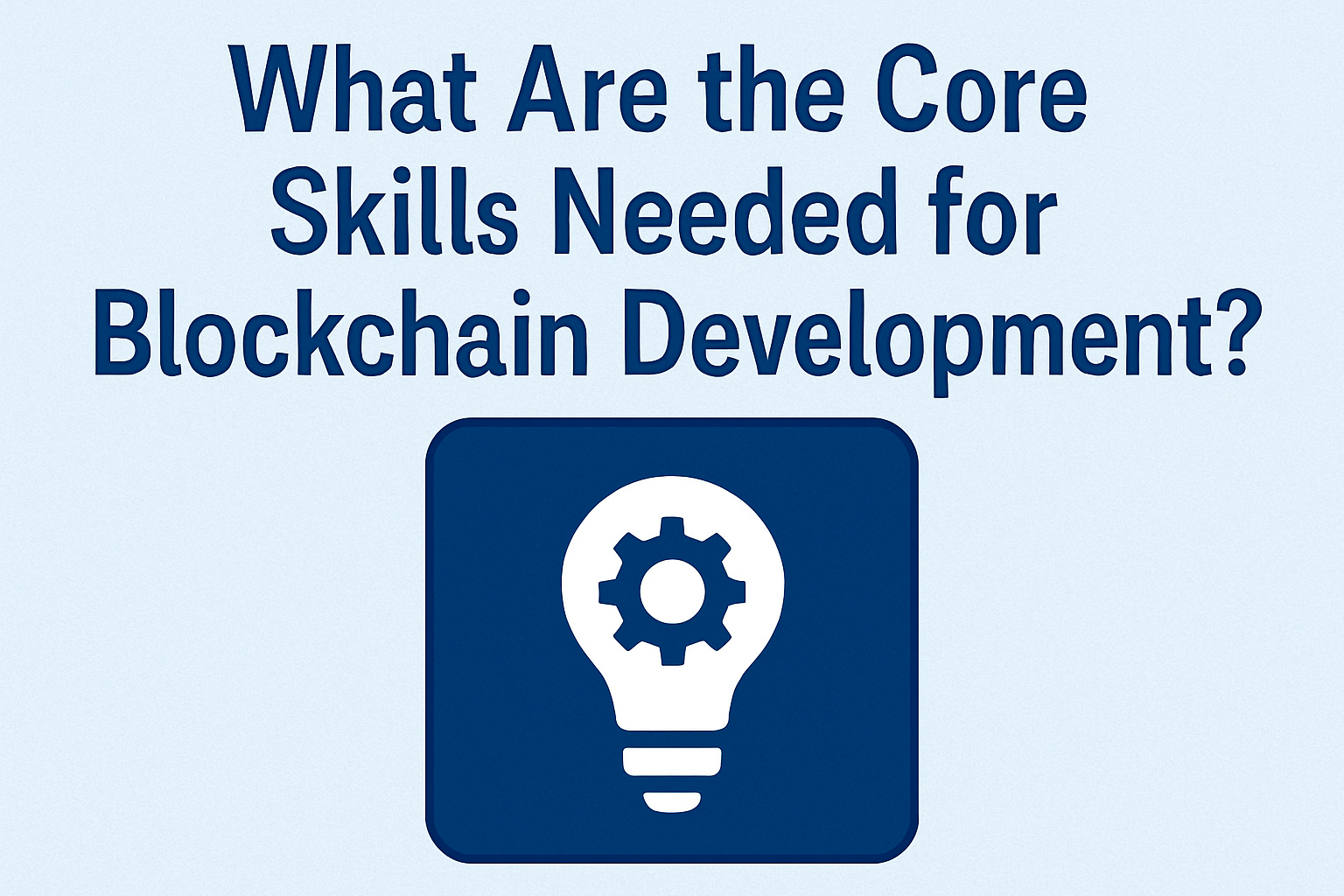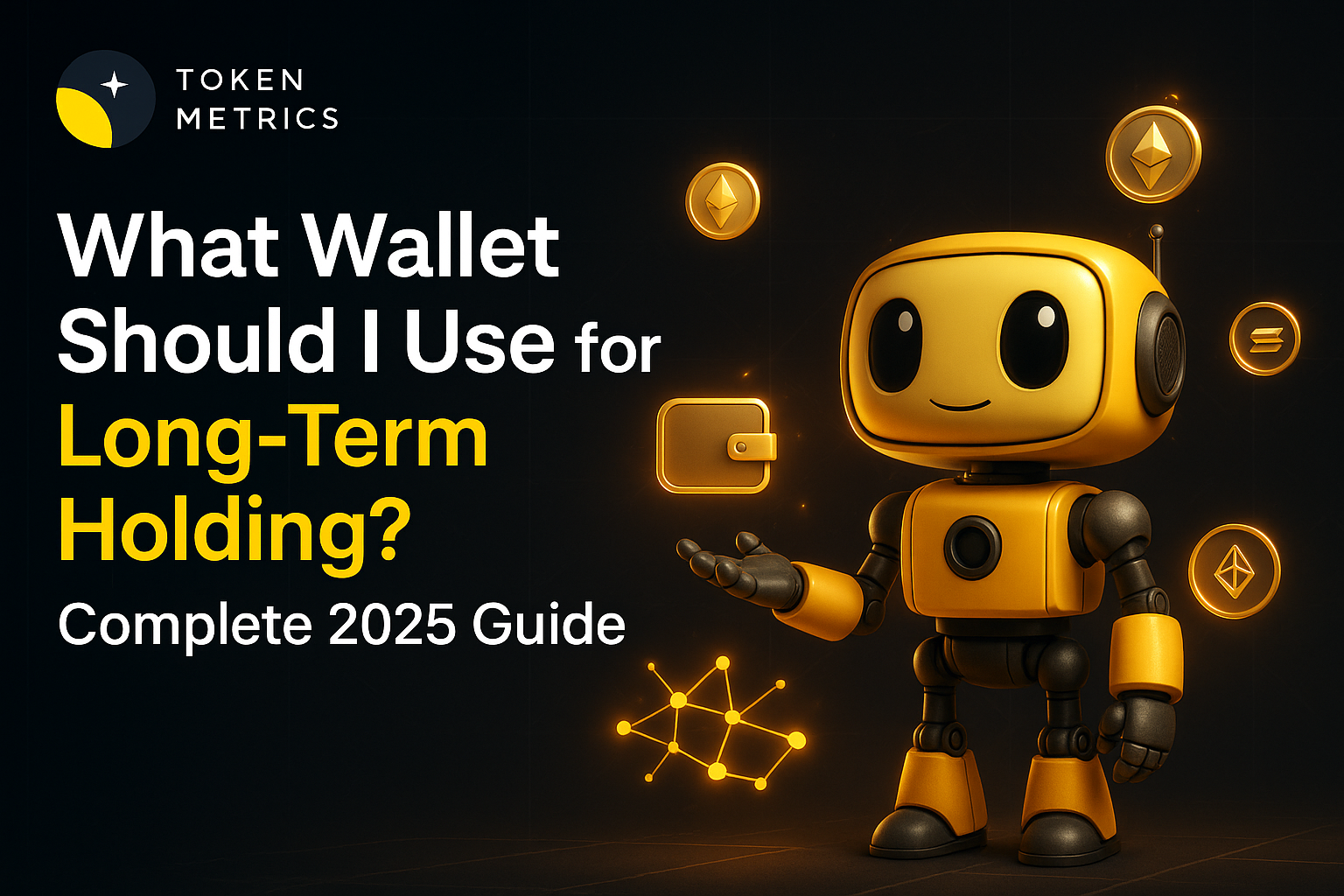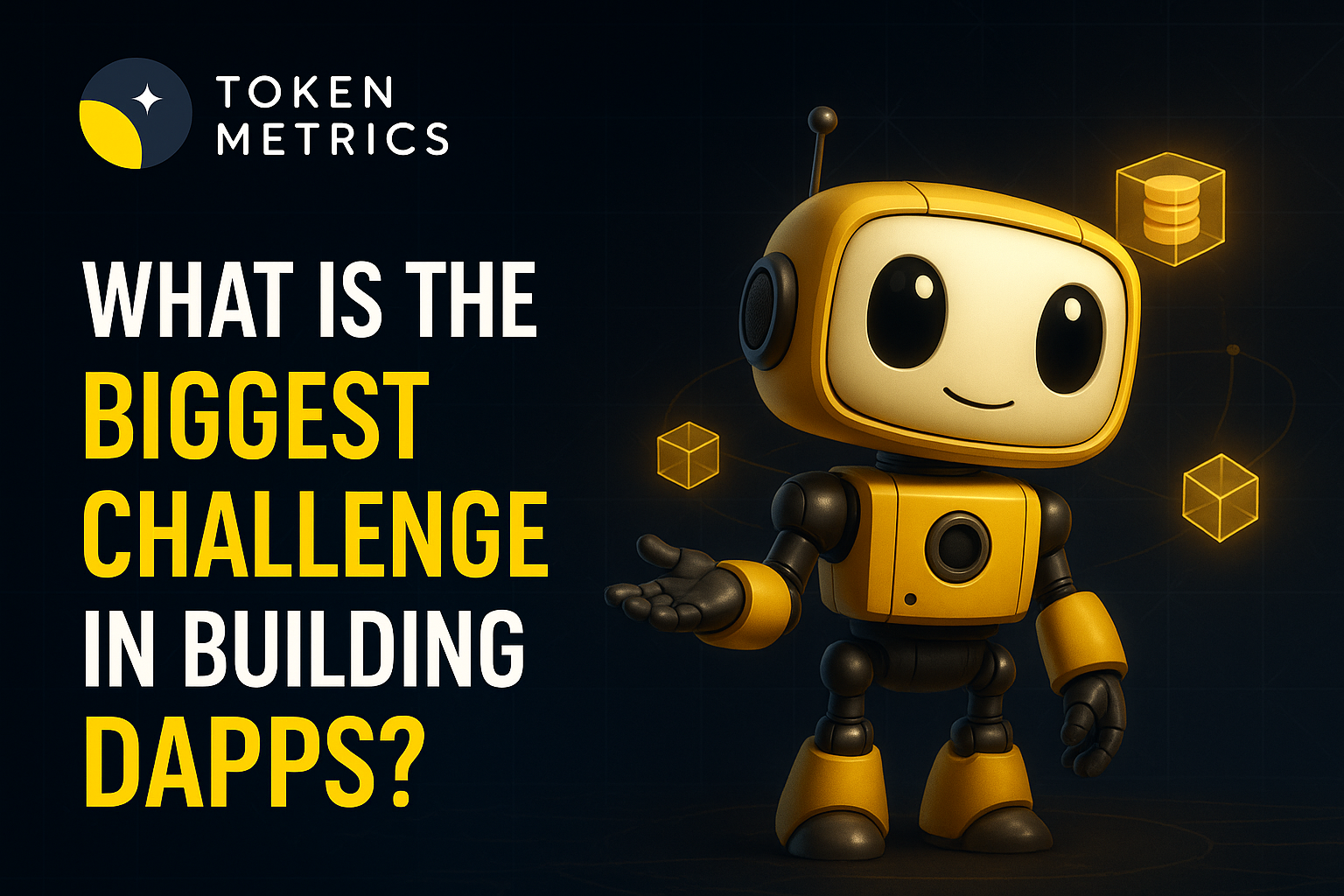
What Are the Core Skills Needed for Blockchain Development? A Complete 2025 Guide

The blockchain revolution has evolved from a niche curiosity into a foundational element of modern digital infrastructure. As we move through 2025, the demand for skilled blockchain developers is skyrocketing, driven by the rapid expansion of blockchain technology across various sectors. Experts predict that the global blockchain technology market will reach an astounding USD 1,879.30 billion by 2034. Whether you are an aspiring blockchain developer or an experienced software engineer looking to transition into this dynamic field, understanding what are the core skills needed for blockchain development is essential to thrive in today’s competitive landscape.
Understanding Blockchain Development in 2025
Blockchain development involves creating and maintaining decentralized applications (DApps), blockchain protocols, and innovative blockchain solutions. This technology is revolutionizing industries ranging from finance and healthcare to supply chain management by offering secure, transparent, and immutable systems. In 2025, blockchain developers typically fall into two main categories:
Blockchain Core Developers focus on the foundational layers of blockchain technology. They design and build blockchain architecture, including consensus algorithms such as Proof of Work (PoW), Proof of Stake (PoS), and Proof of History (PoH). Their work ensures the security, scalability, and resilience of blockchain networks by managing blockchain nodes and maintaining network security. These core developers possess a thorough knowledge of distributed ledger technology, cryptographic principles, and network architecture.
On the other hand, Blockchain Software Developers leverage existing blockchain platforms and protocols to build decentralized applications and smart contracts. They specialize in smart contract development, integrating frontend web development with blockchain backends, and creating user-friendly decentralized apps (DApps). These developers work on blockchain applications that interact with blockchain transactions, digital assets, and decentralized exchanges, often utilizing APIs to connect blockchain services with traditional business processes.
Understanding this distinction is critical to identify the core blockchain developer skills required for each role and to tailor your learning path accordingly.
Essential Programming Languages for Blockchain Development
Mastering specific programming languages is a cornerstone of blockchain developer technical skills. Here are the top languages that every blockchain professional should consider:
1. Solidity: The King of Smart Contracts
Solidity reigns supreme in the blockchain space, especially for Ethereum-based development. Created by Gavin Wood in 2014, Solidity is a statically typed language specifically designed for writing smart contracts. It combines the familiarity of C++, JavaScript, and Python syntax, making it accessible for many software developers.
Solidity’s strong community support, extensive documentation, and widespread adoption make it the backbone of approximately 90% of smart contracts deployed today. Major decentralized finance (DeFi) platforms like Compound, Uniswap, and MakerDAO rely heavily on Solidity for their smart contract infrastructure. For any developer aiming to become a blockchain developer, proficiency in Solidity and smart contract logic is indispensable.
2. Rust: Performance and Security Combined
Rust is gaining significant traction in blockchain development due to its focus on memory safety and high performance. Unlike languages with garbage collection, Rust’s ownership model guarantees memory safety without sacrificing speed, reducing common programming pitfalls such as race conditions and memory corruption.
Rust is extensively used in cutting-edge blockchain platforms like Solana, NEAR, and Polkadot. Developers familiar with C++ will find Rust’s syntax approachable, while appreciating its enhanced security features. For blockchain core developers working on blockchain systems that demand speed and reliability, Rust is a top blockchain developer skill.
3. JavaScript: Bridging Web2 and Web3
JavaScript remains a versatile and essential language, especially for integrating blockchain applications with traditional web interfaces. Its extensive ecosystem, including frameworks like Node.js, React.js, Angular, and Vue.js, enables developers to build responsive frontends and backend services that interact seamlessly with blockchain networks.
Libraries such as Web3.js and Ethers.js facilitate blockchain integration, allowing developers to manage blockchain transactions, interact with smart contracts, and maintain decentralized applications. JavaScript skills are vital for blockchain software developers aiming to create intuitive decentralized apps and blockchain services.
4. Python: Simplicity Meets Power
Python’s simplicity and versatility make it a popular choice for blockchain development, particularly for scripting, backend integration, and prototyping. Python is also the foundation for Vyper, a smart contract language designed to complement Solidity with a focus on security and simplicity.
Python’s easy-to-learn syntax and broad application in data science and machine learning make it a valuable skill for blockchain developers interested in emerging technologies and AI integration within blockchain solutions.
5. Go: Google's Blockchain Powerhouse
Go (Golang) is renowned for its user-friendliness, scalability, and speed, making it ideal for blockchain development. It powers prominent projects such as Go-Ethereum (the official Ethereum client), Hyperledger Fabric, and various DeFi protocols.
For blockchain developers focusing on enterprise blockchain applications and network architecture, Go offers the tools necessary to build efficient distributed systems and maintain decentralized networks.
Critical Technical Skills Beyond Programming
While programming languages form the foundation, several other technical competencies are essential to excel in blockchain development.
Smart Contract Development
Smart contracts are self-executing agreements coded directly into blockchain networks. Proficiency in creating smart contracts is central to blockchain development involves creating automated, transparent, and secure agreements without intermediaries. Developers must master gas optimization to reduce transaction fees, apply security best practices to prevent vulnerabilities, and adopt rigorous testing and deployment strategies to ensure contract reliability.
Blockchain Architecture and Cryptography
A deep understanding of blockchain architecture is vital. This includes knowledge of consensus mechanisms such as PoW, PoS, and emerging alternatives, which govern how blockchain networks agree on the validity of transactions. Familiarity with cryptographic principles, including hash functions, cryptographic hash functions, digital signatures, and public key cryptography, is necessary to secure blockchain transactions and digital assets.
Moreover, blockchain developers should understand how blockchain nodes communicate within distributed networks, the structure of data blocks, and how blockchain consensus ensures data integrity across decentralized systems.
Web Development Integration
Modern blockchain applications require seamless integration between traditional web technologies and blockchain backends. Developers use libraries like Web3.js, Ethers.js, and Web3.py to connect decentralized apps with user-friendly interfaces. Skills in frontend frameworks (React.js, Angular, Vue.js), backend development (Node.js, Python), and API development are essential to build responsive and scalable blockchain applications that cater to diverse user needs.
Essential Development Tools and Frameworks
Development Frameworks
Frameworks such as Hardhat and Truffle simplify blockchain development by providing comprehensive environments for compiling, testing, and deploying smart contracts. Hardhat is a flexible JavaScript-based framework favored for its powerful debugging capabilities, while Truffle offers an end-to-end development suite for scalable blockchain applications. For beginners, Remix IDE presents a browser-based environment ideal for learning and experimenting with smart contracts.
Testing and Security Tools
Security is paramount in blockchain development. Developers must rigorously test smart contracts using tools like Remix, Hardhat, and Truffle to simulate various scenarios and identify vulnerabilities. Adhering to security best practices, such as leveraging established libraries like OpenZeppelin, conducting professional security audits, and following industry-standard coding conventions, ensures that blockchain applications remain secure against attacks like reentrancy or denial-of-service.
Blockchain Platforms and Networks
Proficiency across different blockchain platforms is crucial. Ethereum remains the most popular blockchain development platform, supported by a vast ecosystem and extensive developer resources. Layer 2 solutions such as Polygon, Arbitrum, and Optimism address Ethereum’s scalability challenges, while alternative blockchains like Solana, Binance Smart Chain, and Avalanche cater to specific use cases with unique performance attributes.
Enterprise-focused platforms like Hyperledger Fabric offer permissioned blockchain networks tailored for business applications, emphasizing privacy and compliance. Understanding these platforms enables developers to select the appropriate blockchain ecosystem for their projects.
The Role of Token Metrics in Blockchain Development Success
Beyond technical skills, understanding token economics and market dynamics is increasingly important for blockchain developers. Token Metrics is an invaluable platform offering AI-powered analytics that help developers navigate the cryptocurrency market and make informed technical decisions.
Why Token Metrics is Essential for Developers
Token Metrics equips developers with market intelligence by analyzing over 6,000 tokens daily, providing insights into which blockchain platforms and projects are gaining traction. This knowledge aids developers in selecting technologies and designing blockchain solutions aligned with market trends.
The platform’s comprehensive analysis of token economics supports developers working on DeFi protocols, decentralized finance applications, and tokenized ecosystems. Real-time performance tracking and sentiment analysis help developers evaluate project viability, guiding architecture choices and consensus mechanism implementations.
Leveraging Token Metrics for Career Growth
By using Token Metrics, blockchain professionals can build expertise that combines technical proficiency with market awareness—an increasingly sought-after combination in the blockchain industry. The platform’s scoring systems teach developers to evaluate projects systematically, a skill crucial for leadership roles.
Staying current with emerging trends through Token Metrics’ real-time alerts ensures developers remain at the forefront of innovation, enabling them to create innovative solutions that meet evolving market demands.
Advanced Skills for 2025 and Beyond
Emerging Technologies Integration
The blockchain space is rapidly evolving, with new languages like Move, Cadence, Cairo, and Ligo addressing challenges related to scalability, security, and usability. Integration with AI and machine learning technologies is becoming more prevalent, enhancing blockchain applications’ capabilities.
Cross-chain development skills, including knowledge of interoperability protocols and bridges, are essential as decentralized networks become more interconnected. Privacy-preserving technologies like zero-knowledge proofs (zk-SNARKs and zk-STARKs) are critical for developing secure, confidential blockchain applications.
Performance Optimization
Efficient transaction processing and scalability are vital for blockchain usability. Developers must master gas optimization techniques to minimize transaction fees and implement scalability solutions such as Layer 2 protocols and sidechains. Load testing ensures that blockchain applications can handle high volumes of transactions without compromising performance.
Security and Auditing
Security remains a top priority. Developers should acquire skills in code review methodologies, vulnerability assessments, penetration testing, and formal verification to audit smart contracts thoroughly. Choosing programming languages with strong typing and memory safety features helps prevent common security threats, reinforcing blockchain security.
Building Your Blockchain Development Career
Learning Path Recommendations
To become a proficient blockchain developer, a structured learning path is beneficial:
Phase 1: Foundation (2-3 months)
Start by mastering a core programming language such as Python or JavaScript. Build a solid understanding of blockchain basics, cryptographic concepts, and blockchain fundamentals. Utilize platforms like Token Metrics to gain insights into market dynamics.
Phase 2: Specialization (4-6 months)
Learn Solidity and focus on smart contract development. Gain hands-on experience with development frameworks like Hardhat or Truffle. Build and deploy simple decentralized applications on testnets to apply your knowledge practically.
Phase 3: Advanced Development (6-12 months)
Delve into advanced topics such as Layer 2 solutions, cross-chain interoperability, and blockchain consensus algorithms. Contribute to open-source blockchain projects and develop expertise in specific blockchain ecosystems to build a robust portfolio.
Portfolio Development
A strong portfolio is essential for showcasing your blockchain developer skills. Include smart contracts with clean, audited code, full-stack DApps featuring intuitive user interfaces, and contributions to open-source blockchain projects. Demonstrate your understanding of token economics and market dynamics to highlight your comprehensive blockchain expertise.
Industry Outlook and Opportunities
The blockchain development landscape in 2025 offers unprecedented opportunities fueled by exponential market growth. The expanding blockchain industry creates demand across multiple sectors:
- DeFi and Financial Services: Innovating next-generation financial applications that disrupt traditional financial services.
- NFTs and Digital Assets: Developing marketplaces and platforms for tokenizing digital assets.
- Enterprise Blockchain: Building permissioned networks tailored for business applications requiring privacy and compliance.
- Web3 Infrastructure: Designing the protocols and tools that power decentralized applications and services.
As blockchain technology continues to integrate with emerging technologies, blockchain professionals with a blend of technical and soft skills will be pivotal in driving the future of decentralized solutions.
Conclusion: Your Path to Blockchain Development Success
In 2025, what are the core skills needed for blockchain development extends beyond just programming. It encompasses a thorough understanding of blockchain architecture, cryptographic principles, smart contract development, and seamless web integration. Equally important is market awareness, token economics knowledge, and the ability to evaluate projects critically.
Platforms like Token Metrics provide indispensable market intelligence that complements technical skills, empowering developers to make informed decisions and create innovative blockchain applications. The blockchain revolution is still unfolding, and developers who combine technical proficiency with market insight will lead the next wave of innovation.
Start your journey today by mastering the fundamentals, leveraging professional tools, and building projects that demonstrate both your technical competence and market understanding. The future of decentralized technology depends on blockchain developers equipped with the right skills to build secure, scalable, and transformative blockchain systems.

.svg)

Create Your Free Token Metrics Account

.png)




%201.svg)
%201.svg)


%201.svg)










.svg)




.png)